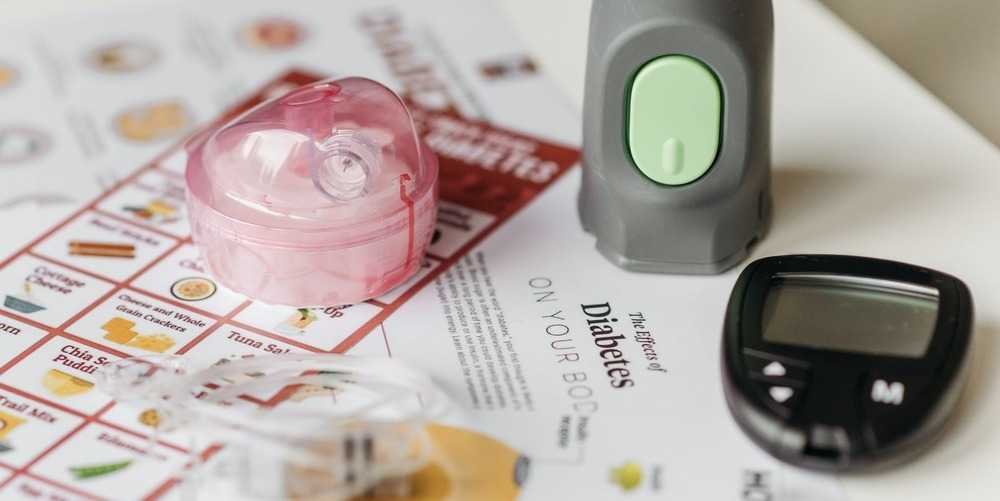
Example for Diabetics: Wrong Habits Risk Blindness! Health Check-up and Following Doctor’s Advice Coexist With Diabetes
According to statistics, “diabetes” has jumped to fifth among the top 10 causes of death in the world. Since diabetes is a disease that once contracted, it requires lifelong treatment with drugs, diet control, and exercise control to reduce the risk. It cannot be reversed by taking drugs. In addition, the number of patients with diabetes has reached record highs in recent years, which is equivalent to an alarming growth rate that one in every 10 people will suffer from diabetes. If you are not careful, you may be at risk of amputation, blindness or even death due to wrong habits.
Through the actual cases of diabetics, this article summarizes the wrong habits that are most easily ignored, and what two concepts should be possessed in order to coexist with diabetes for a lifetime.
Wrong habits of diabetics: Ignoring symptoms and only finding out about diabetes after seeking medical treatment
Bonnie is a girl of 18th year old. She is young and invincible, but she cannot live a colorful life like a normal girl. She always feels tired but does not face the illness. The process lasts for several months, until she stopped working while working. After he fainted and was sent to the hospital, he discovered that he had type 2 diabetes and had to start taking medication. He has been suffering from diabetes ever since. It was only then that Bonnie realized that she had lost the life experience of girls her age who could be happy, carefree, eat and have fun.
There are many causes of diabetes, the most common of which are aging, immune system disorders or other diseases, which cause necrosis of pancreatic islet cells, resulting in the body not secreting “enough” insulin, or obesity, certain overeating, etc. The body’s sensitivity to insulin decreases and it cannot effectively function, leaving the body in a dangerous state of high blood sugar.
Bonnie’s symptoms are of what is commonly known as “type 2 diabetes,” which is the most common form of diabetes. In addition to being one of the common chronic diseases in the elderly in the past, the incidence rate among young adults before the age of 40 has gradually increased in recent years. Although type 2 diabetes has commonly recognized symptoms such as excessive drinking, excessive urination, weight loss, difficulty in wound healing, blurred vision, etc., sometimes the initial symptoms are mild, or even no symptoms at all, and are not easy to detect, so the public needs to be more aware of it. Pay more attention to your own situation.

Concept 1: Physical examination can help identify disease conditions. Failure to treat them may lead to amputation.
In fact, many patients accidentally discover that they are diabetic through physical examination or when they go to outpatient clinics for other diseases, and then receive further treatment. To be diagnosed with diabetes, there must be two fasting 8-hour plasma blood sugar ≧126 mg/dL, a 2-hour tolerance test after oral administration of 75 grams of glucose, a 2-hour plasma blood sugar greater than or equal to 200 mg/dL, or glycated hemoglobin (HbA1c) greater than or equal to 6.5%. to determine the results. Dr. Huang Nanhao said that if blood sugar is not properly controlled, although it is not immediately fatal, the long-term accumulation of high blood sugar in the body will increase the risk of complications such as kidney failure, stroke, myocardial infarction, amputation, neuropathy or retinopathy.
According to preliminary estimates, Seven-thousand nine-hundred and fifty-seven (7957) major diabetic lower limb amputations were reported in England between 2017 to 2020. Furthermore, the cost of health care for ulceration and amputation in diabetes has been estimated at almost one billion pounds per year. People with diabetes have a 25% chance of developing foot ulcers in their lifetime, which can easily lead to amputation. Therefore treatment is necessary.
Wrong habits of diabetics: poor eating habits and risk of death if you stop taking medication on your own
Dan, who works in a technology company, has been suffering from diabetes for about five years. As long as he is in good condition, he often stops taking medicine on his own. On the other hand, Dan does not change his eating habits because of his diabetes. Since he lives alone and does not have a family, Dan usually eats outside. Mainly, every meal was not accompanied by a hand-held drink. Until Dan recently felt a dark shadow flashing in his left eye. At first, he thought it was because he was too tired. However, the situation did not improve after a month, and his body became more and more uncomfortable. He rushed to see a doctor and found out that he was in danger of causing a disaster!

After examination, it was revealed that Dan’s symptoms were “diabetic retinopathy”. Vision-related symptoms occur because the retinal capillaries at the back of the eye have been damaged. If he delayed seeking medical treatment, he would be at great risk of blindness.
Retinopathy caused by diabetes may lead to a blindness crisis, especially in outpatient clinics. It is common for patients to seek treatment when their vision is blurred or cannot see clearly, but it has already deteriorated into proliferative retinopathy or vitreous hemorrhage, and they can only undergo surgery to restore the part. vision. In fact, if it can be detected and treated early, most patients can still avoid surgery and maintain good vision.
Diabetic retinopathy is a common complication of diabetes. It is a microvascular disease caused by long-term hypoxia, resulting in poor retinal function and abnormal new blood vessel proliferation. If left untreated, it often leads to retinal hydrops and hemorrhage, seriously affecting vision; this Such complications are especially likely to occur in patients with poor blood sugar control, but even if the diabetes is under stable control, it may still lead to pathological changes as the disease progresses over time. Diabetic patients should develop the habit of regular eye examinations instead of waiting for poor vision before seeking medical treatment.
Concept 2: Follow your doctor’s instructions and take medications regularly to reduce risks.
The blood sugar control target for diabetes is generally less than 7% glycated hemoglobin to reduce the risk of cardiovascular complications. According to the 2020 Diabetes Clinical Care Guidelines, if the glycated hemoglobin is less than 7.5%, a single hypoglycemic drug can be used; if the glycated hemoglobin exceeds 7.5%, cardiorenal risks and comorbidities should be assessed, and hypoglycemic drugs with different mechanisms are recommended. Treat with more than 2 blood sugar-lowering drugs.
It can be seen from this that it can be said to be a very dangerous behavior when a diabetic patient stops taking medication on his own. In addition to basic diet and lifestyle adjustments, medications also play a very important role in blood sugar control for diabetic patients. Since diabetes is a chronic disease that requires long-term medication, doctors will adjust medications based on the patient’s individual circumstances. Therefore, whether medication is reduced or discontinued, , should be discussed with a doctor before proceeding. If the medication is reduced or discontinued without authorization, it may lead to large fluctuations in blood sugar, leading to cardiovascular disease or other serious consequences.
Even if diabetic patients do not need to take drug treatment after being evaluated by a doctor, they should still maintain healthy living and eating habits and keep track of their blood sugar status regularly every 3 to 6 months to reduce the risk of diabetic complications.












